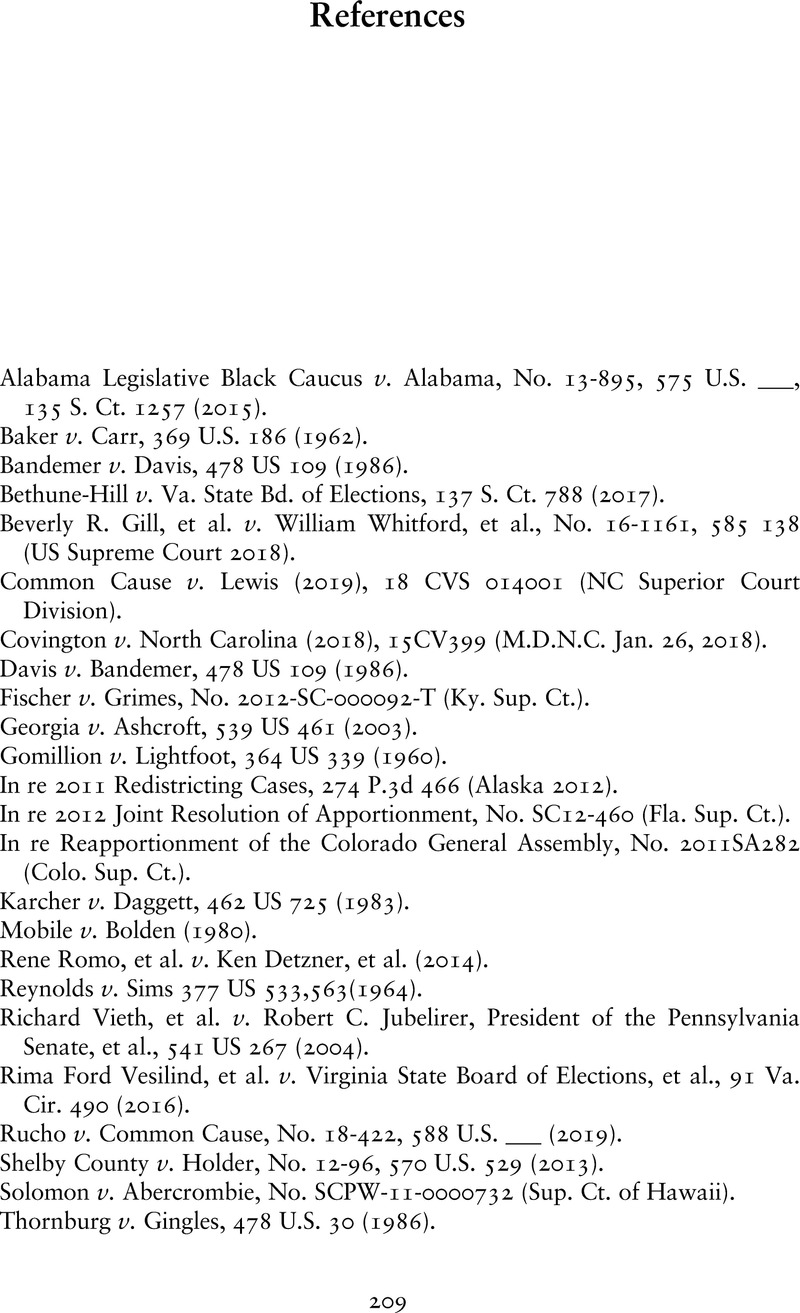Book contents
- Gerrymandering the States
- Gerrymandering the States
- Copyright page
- Contents
- Figures
- Tables
- Acknowledgments
- 1 Redistricting Wars in the US States
- 2 What Happened in 2011? The Other “Great Gerrymander”
- 3 When Politicians Draw the Maps
- 4 How Political Geography Affects Bias
- 5 Racial Geography, the Voting Rights Act, and Bias
- 6 The Policy and Social Consequences of State Legislative Gerrymandering
- 7 The Democratic Harms of Gerrymandering
- 8 When the Courts Redistrict
- 9 How to Design Effective Anti-gerrymandering Reforms
- Conclusion
- References
- Index
- References
References
Published online by Cambridge University Press: 02 July 2021
- Gerrymandering the States
- Gerrymandering the States
- Copyright page
- Contents
- Figures
- Tables
- Acknowledgments
- 1 Redistricting Wars in the US States
- 2 What Happened in 2011? The Other “Great Gerrymander”
- 3 When Politicians Draw the Maps
- 4 How Political Geography Affects Bias
- 5 Racial Geography, the Voting Rights Act, and Bias
- 6 The Policy and Social Consequences of State Legislative Gerrymandering
- 7 The Democratic Harms of Gerrymandering
- 8 When the Courts Redistrict
- 9 How to Design Effective Anti-gerrymandering Reforms
- Conclusion
- References
- Index
- References
Summary

- Type
- Chapter
- Information
- Gerrymandering the StatesPartisanship, Race, and the Transformation of American Federalism, pp. 209 - 226Publisher: Cambridge University PressPrint publication year: 2021

